Learn how to make the most perfect, soft and fluffy sourdough sandwich bread! An active sourdough starter gives this bread a beautiful rise without any need for added yeast.
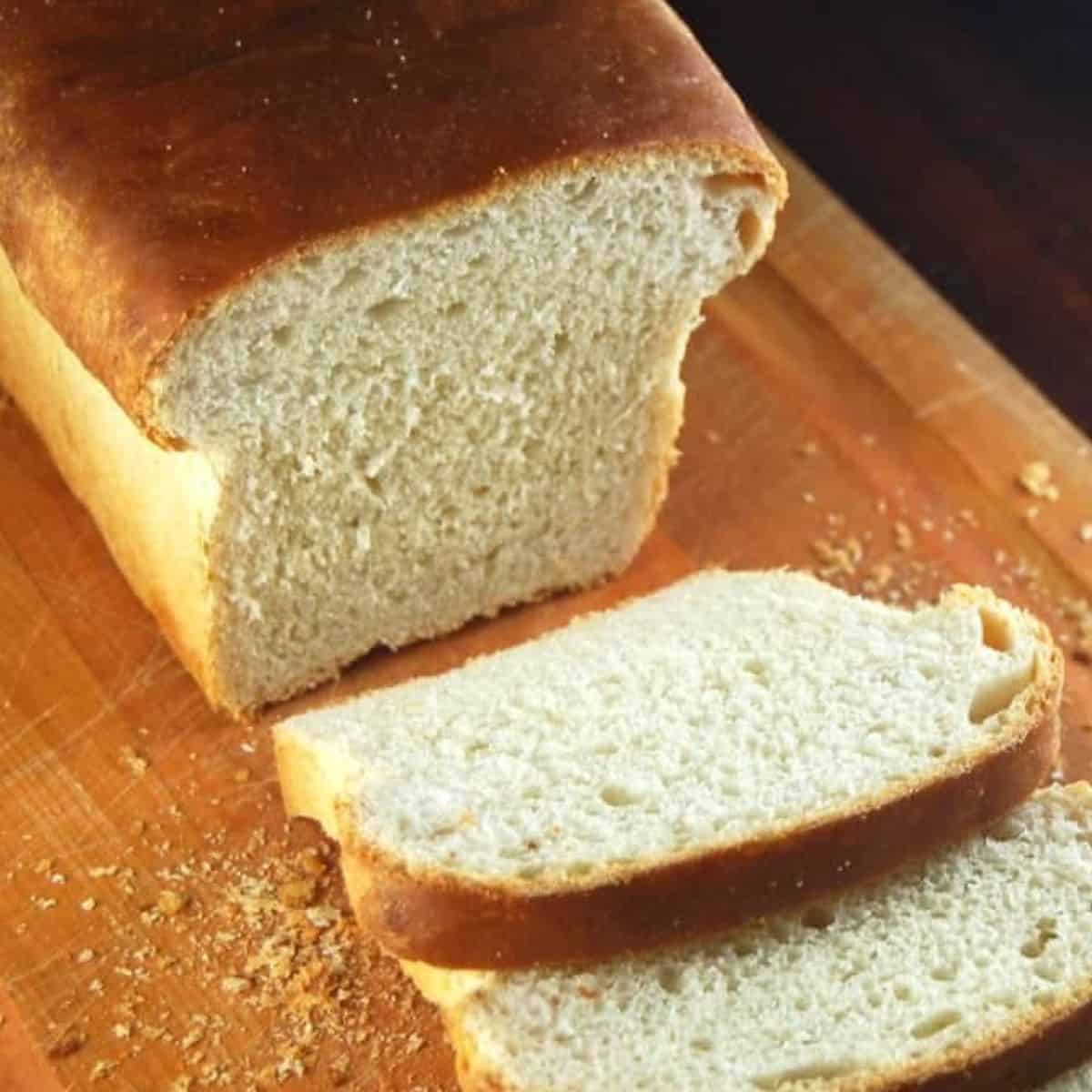
Sourdough breads, like this amazing no-knead sourdough bread, these crusty sourdough rolls, this bread machine sourdough bread and this sourdough olive and sage loaf, are some of my favorite breads to bake. This reader-favorite sourdough sandwich bread, with more than 320 five-star reviews, is on a par with these excellent breads and one I make most often in my kitchen.
The bread turns out just right each time and the recipe makes two sandwich loaves, which last us all week long. And yes, it's mostly white flour, but I don't feel like the devil about it. Research shows that the healthfulness of white sourdough bread exceeds that of wholegrain and multigrain breads.
That's because sourdough has a powerful effect on blood sugar: when left to work its fermenting magic, it breaks down the starches in the foods it's added to, making them easier to digest. Sourdough is also probiotic, which means it is packed with healthy gut bacteria, so you can feel truly holier-than-thou when you smear this bread with some peanut butter or use it to cradle a delicious vegan burger.
Many sourdough breads need to be started a day before, but this sourdough sandwich loaf can easily be made in about eight hours from start to finish, including three rise times. So if you start your bread late in the morning, you can easily have some in time for dinner.
Table of Contents
Why you will love this sourdough sandwich bread
- Buttery and delicious. The sourdough gives the bread a wonderful, buttery flavor in addition to the soft, fluffy texture.
- Healthy bread. Because sourdough starter is fermented, it is full of healthy bacteria that are probiotic and extremely beneficial to the gut microbiome.
- Quick recipe. This bread needs about eight hours of proofing time, total, which is pretty quick for a bread leavened entirely with sourdough and with no added yeast.
- Perfect, fluffy texture. The crust is just lightly chewy and the crumb is soft and fluffy (without any eggs) and just perfect for cradling your favorite sandwich fillings. Stale bread makes great toast.
- Vegan, soy-free, nut-free recipe.
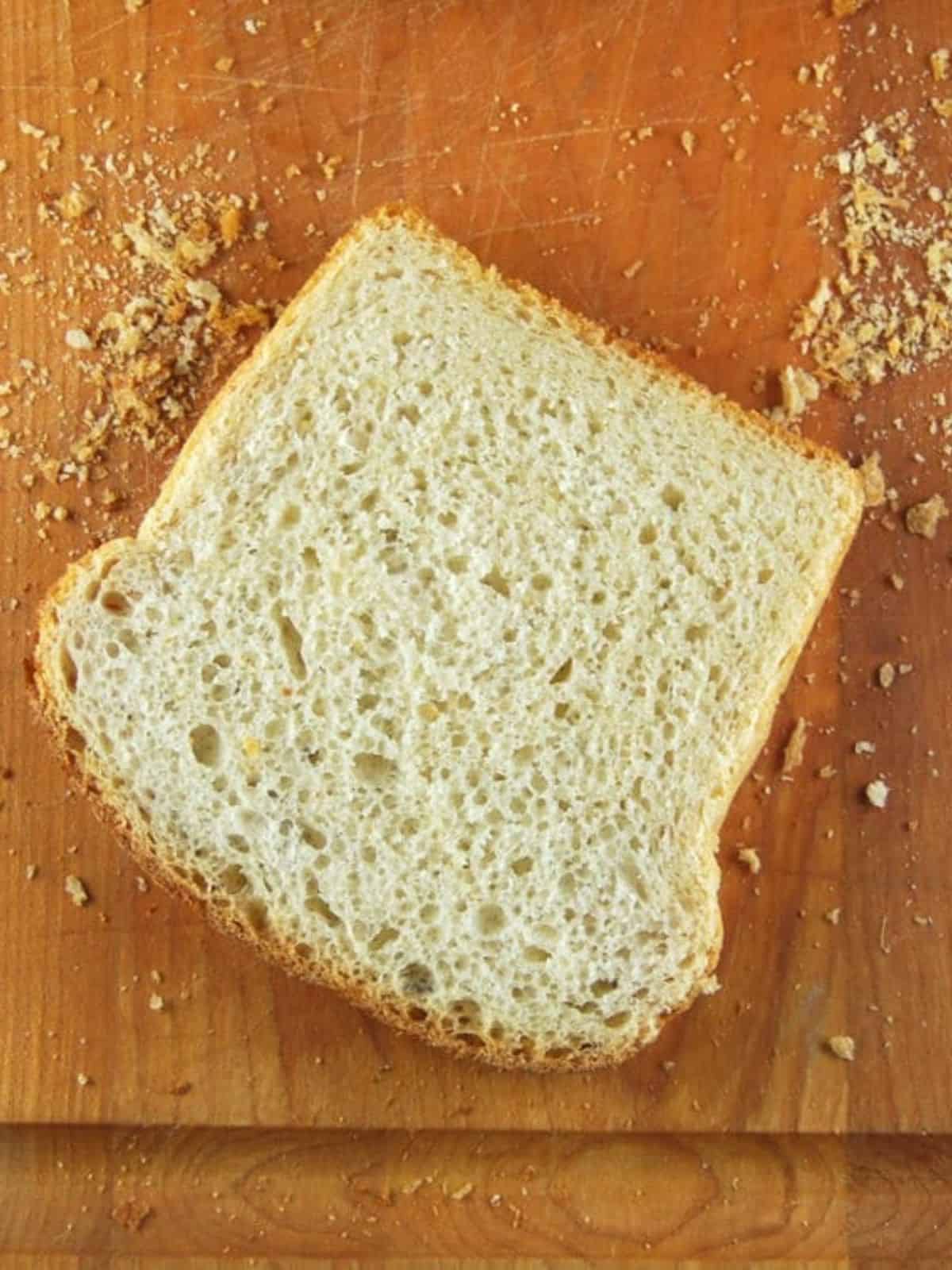
Ingredients
- Sourdough starter: Make sure you use an active, bubbling, recently fed sourdough starter for the best results.
- Unbleached all-purpose flour and whole wheat flour
- Extra virgin olive oil. Or any neutral oil of your choice.
How to make sourdough sandwich bread
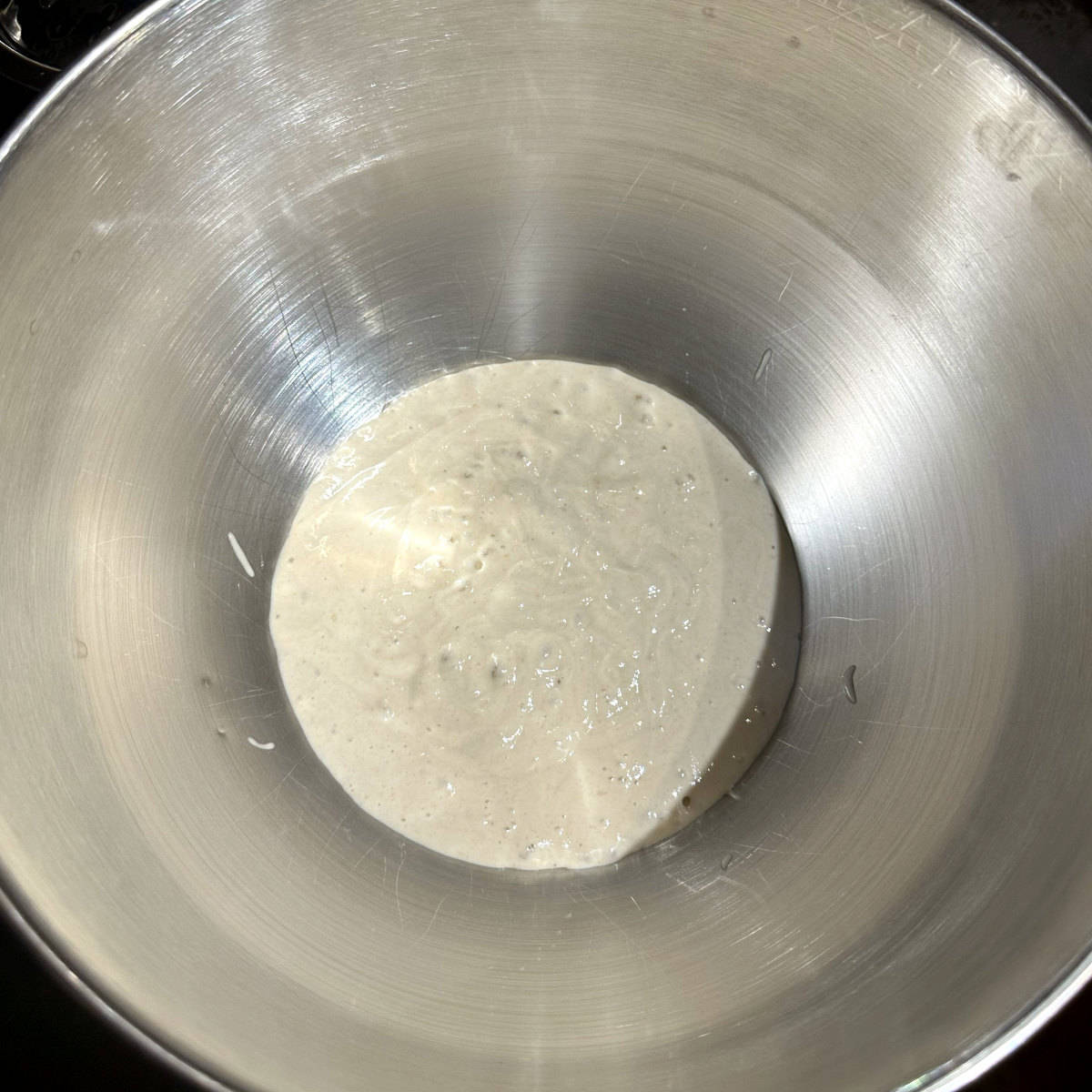
Place the sourdough starter in a large bowl or the bowl of a stand mixer.
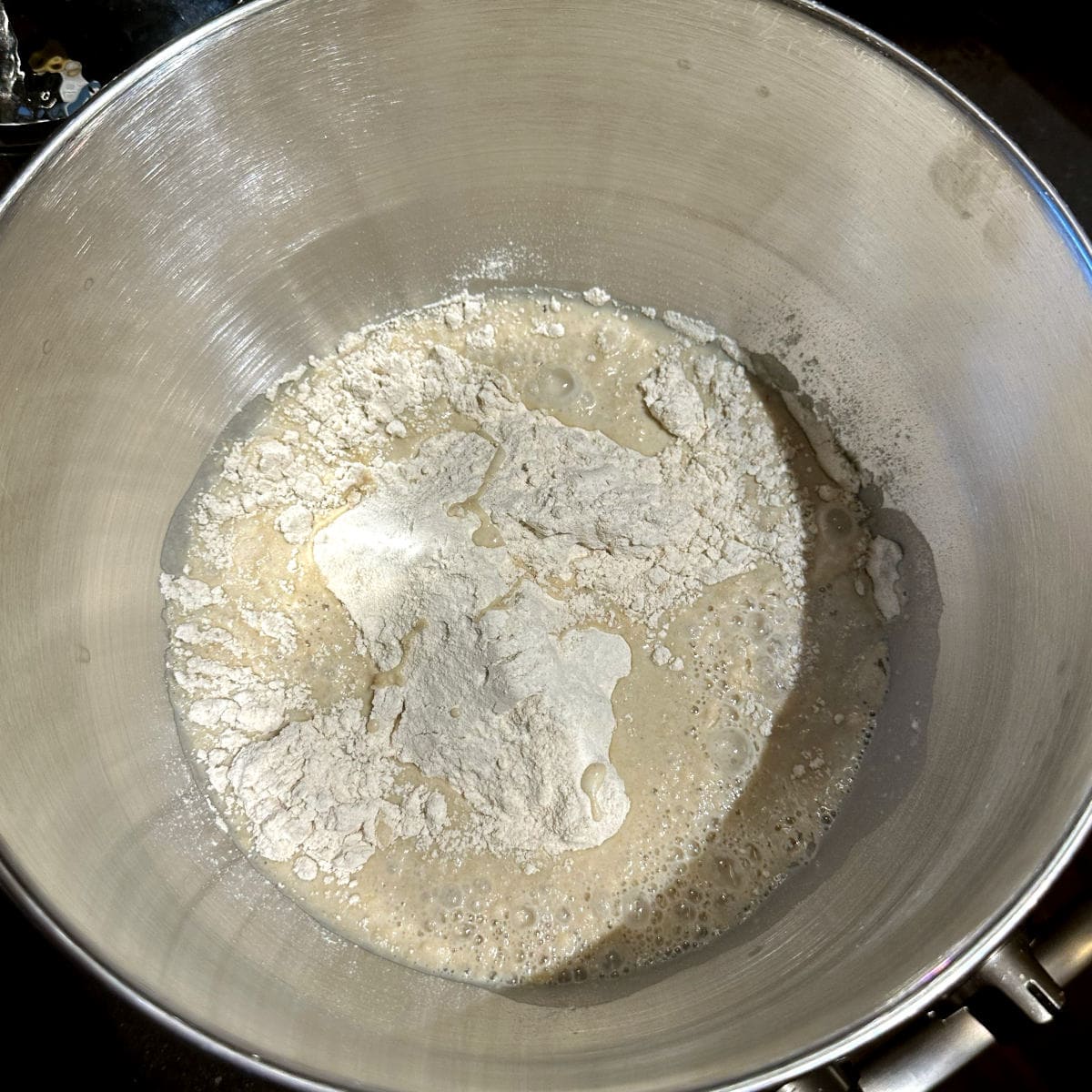
Add to it the wholewheat flour, 1 cup of all-purpose flour, and water.
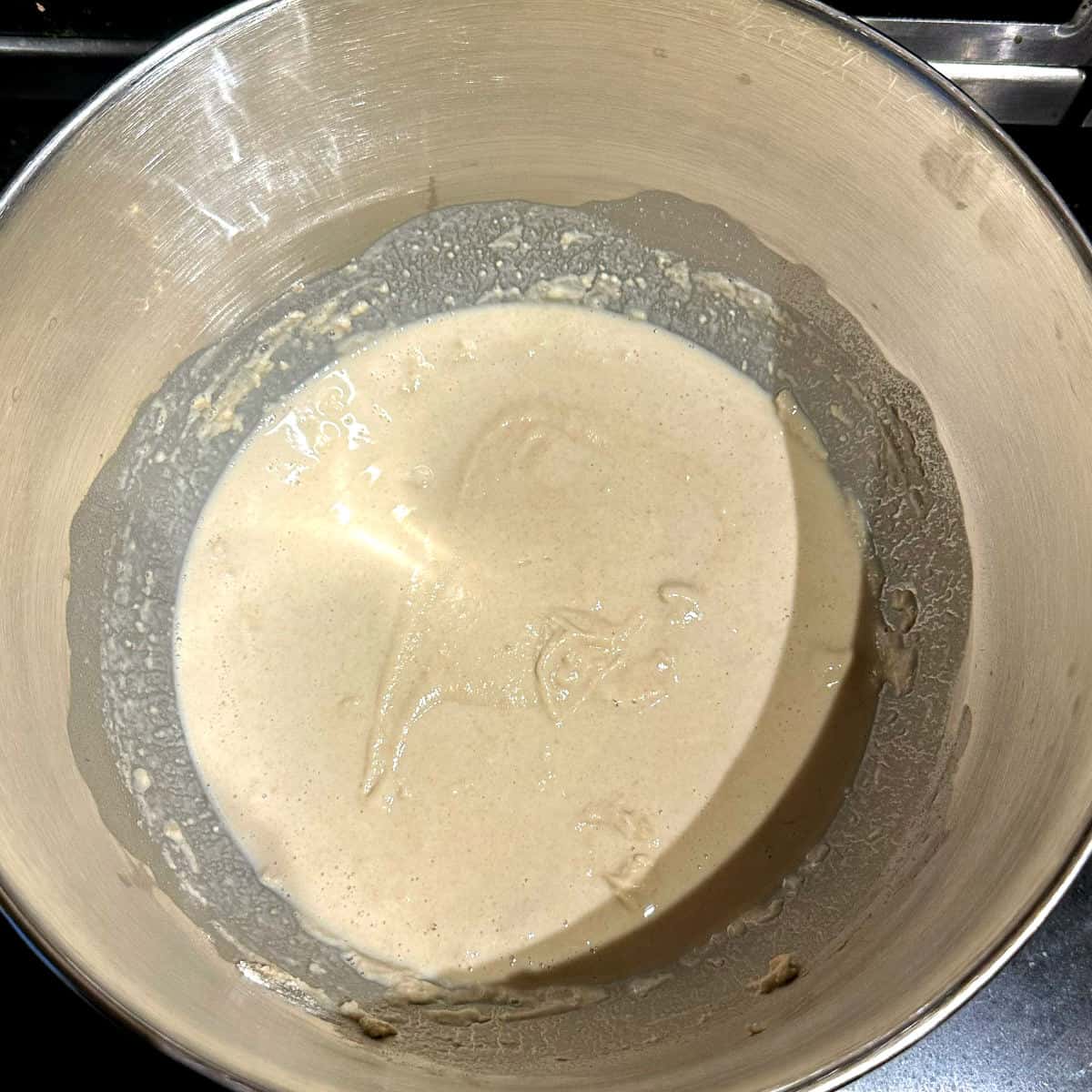
Mix well and set it aside, covered, in a warm place for four hours.
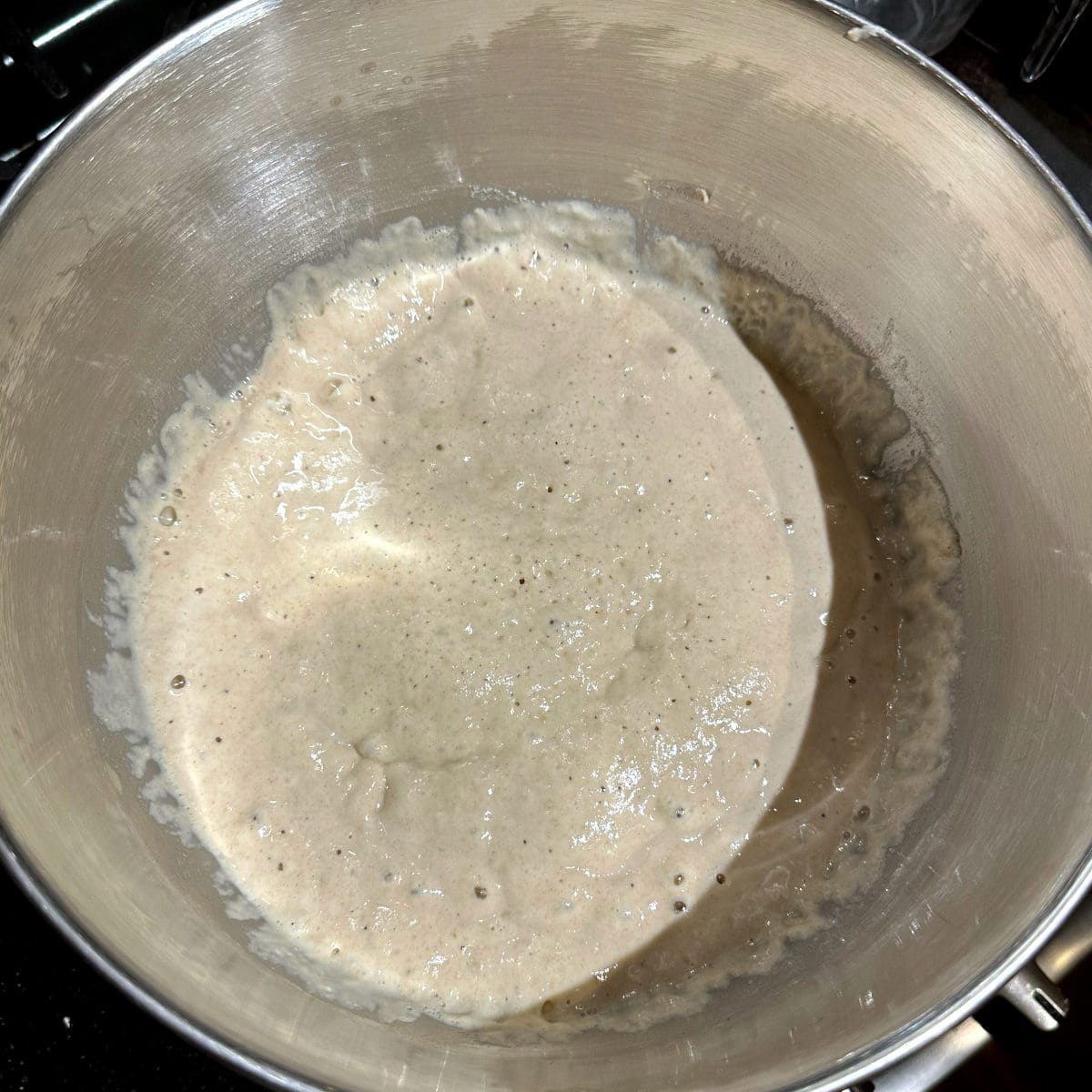
After four hours the starter should be fluffy and bubbly.
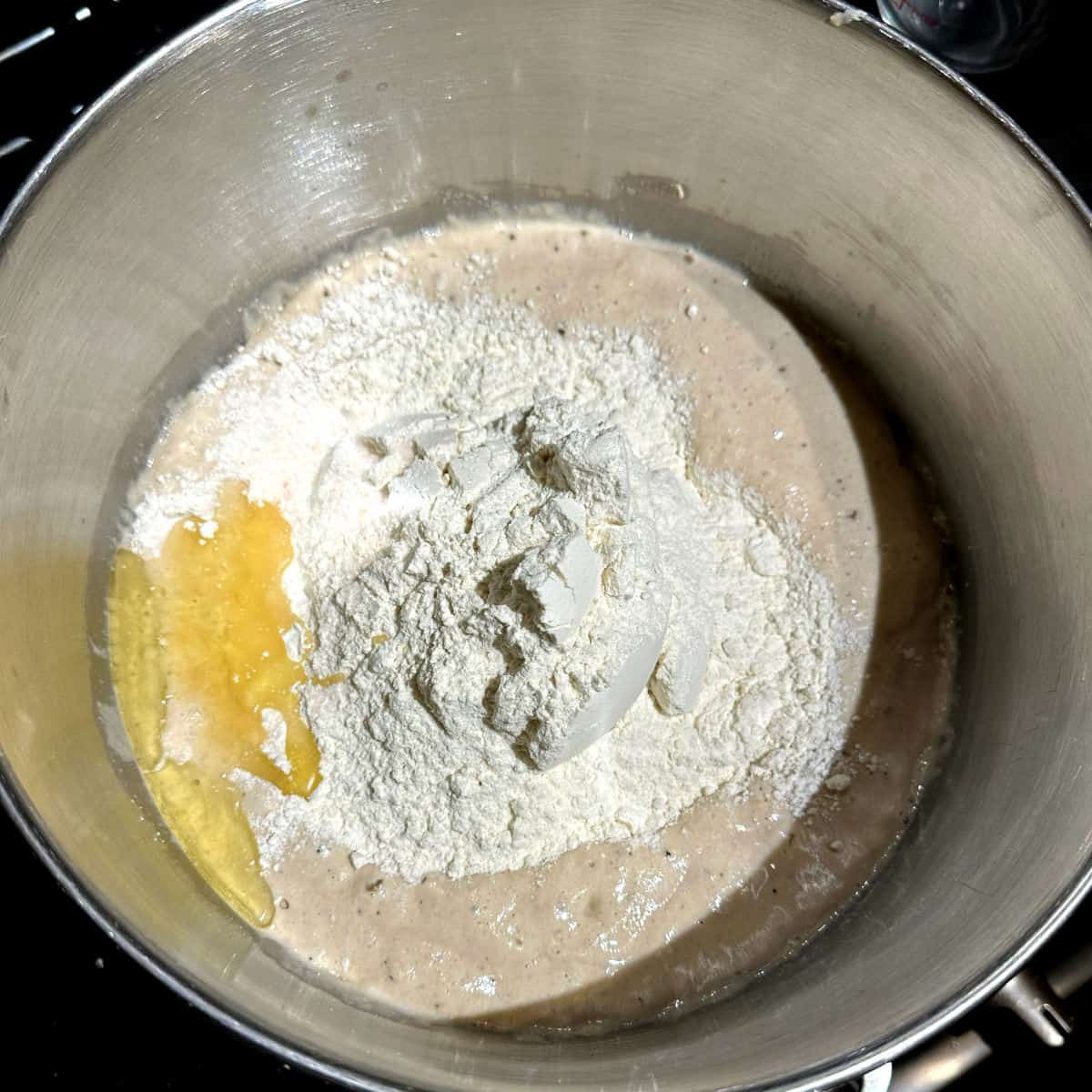
Add 2 cups of all-purpose flour, olive oil and salt to the bowl and mix.
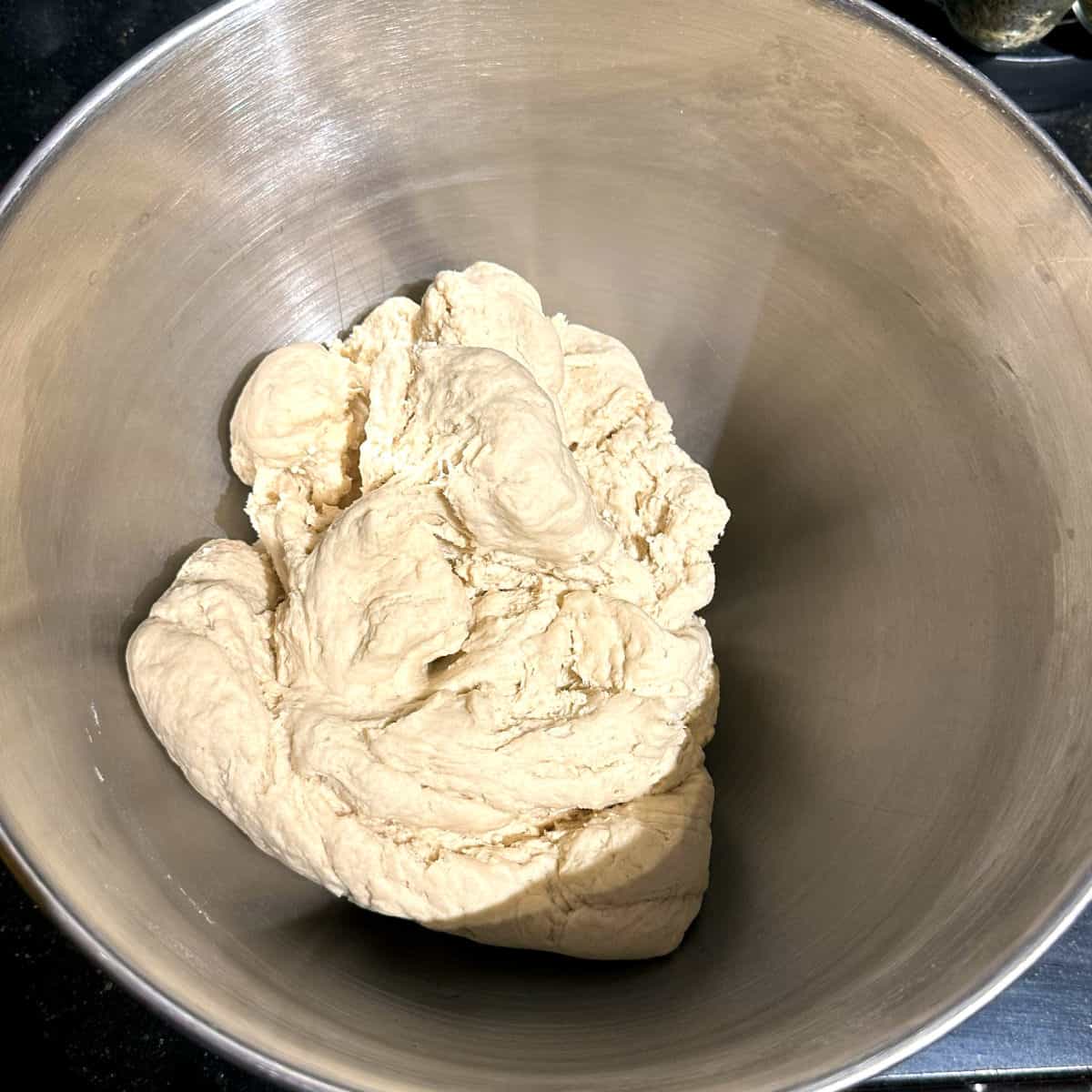
Add more flour as needed and knead until the dough becomes quite firm but still feels a little sticky to your fingers. You can do this by hand or in a stand mixer on medium-low speed.
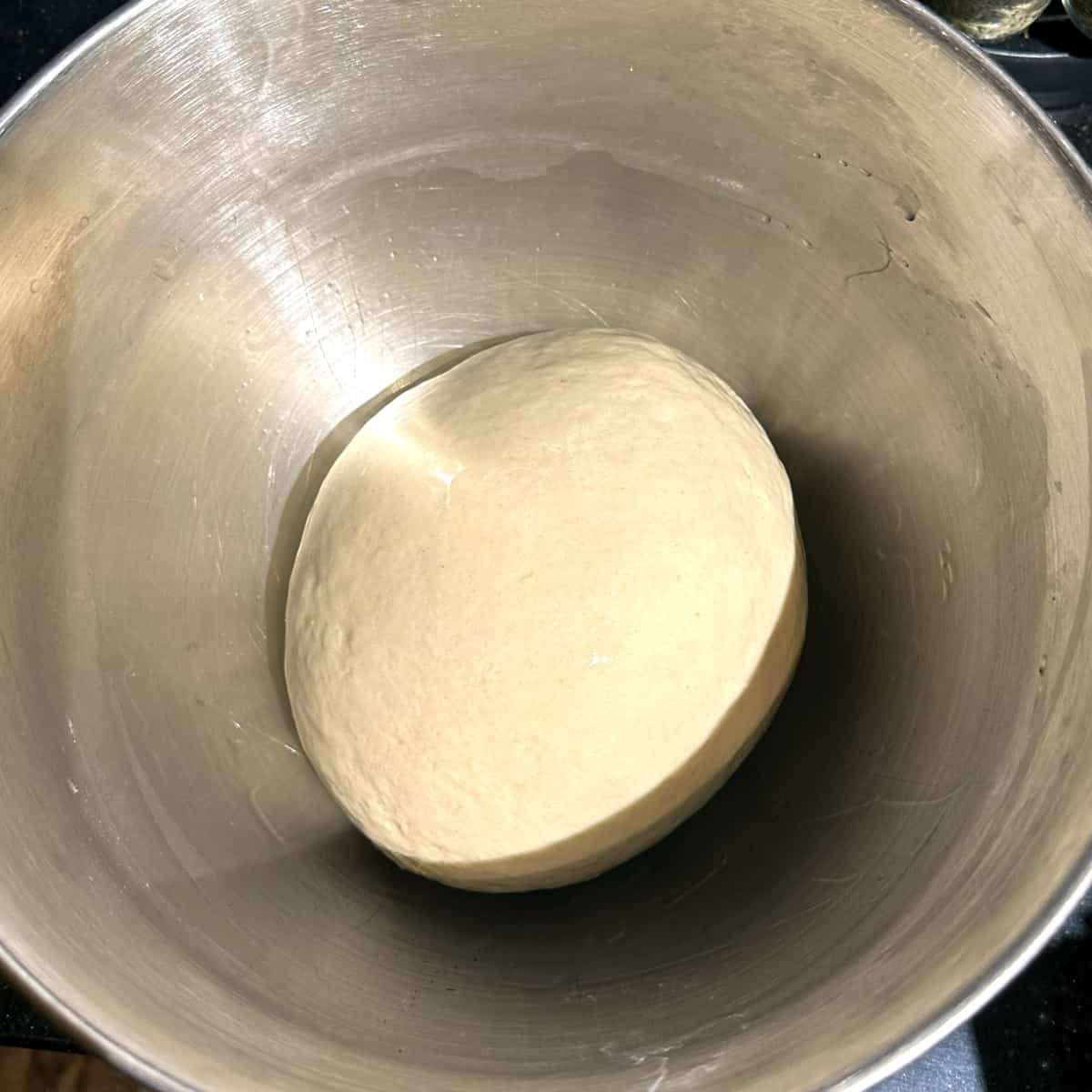
Turn out the dough on a flat surface and knead by hand for 4-5 minutes or until the dough feels smooth and springy. Shape into a ball and place in an oiled bowl, turning the ball of dough around once to coat the top with oil.
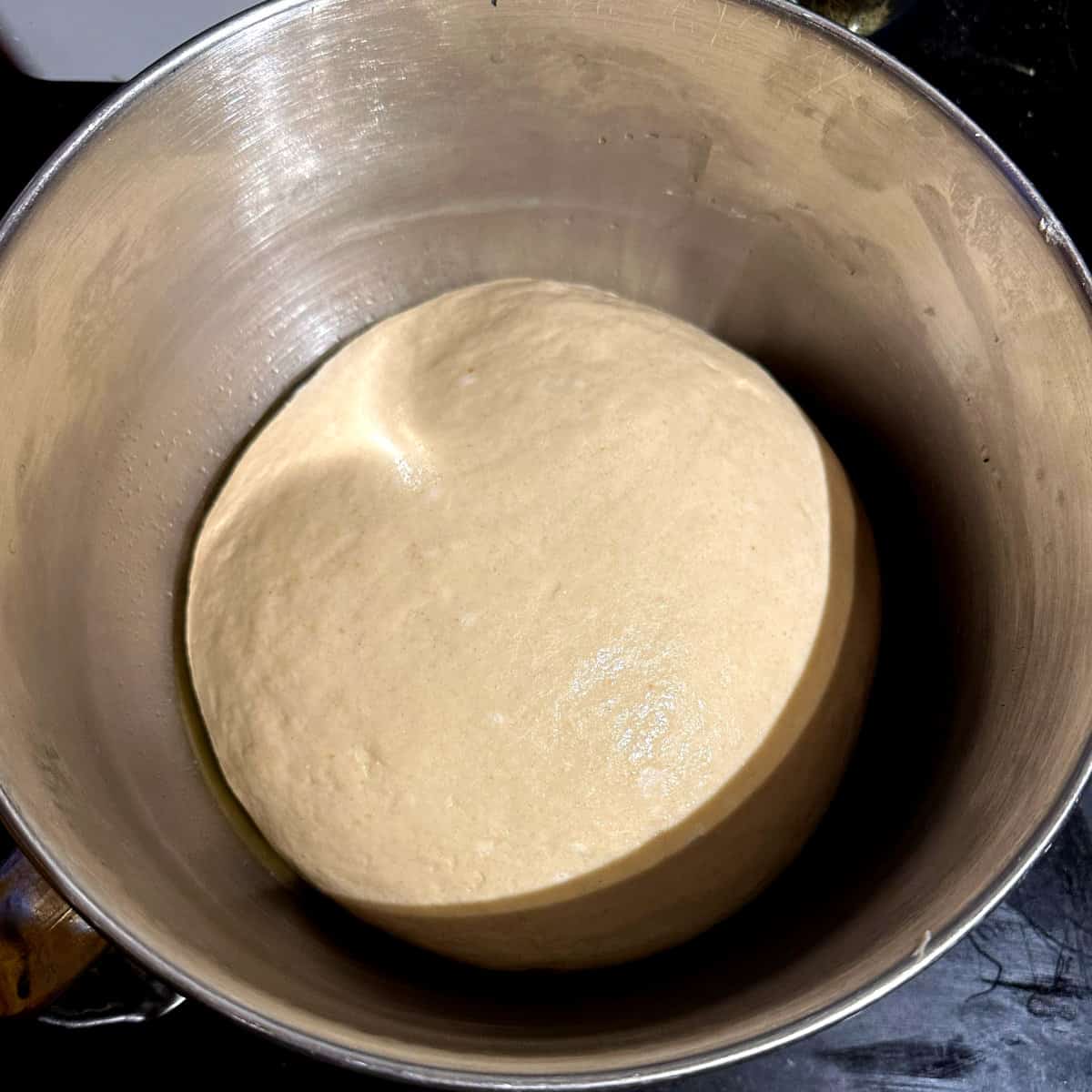
Cover tightly with a lid or plastic wrap and let the dough rise for two hours in a warm spot. After two hours it should have doubled.
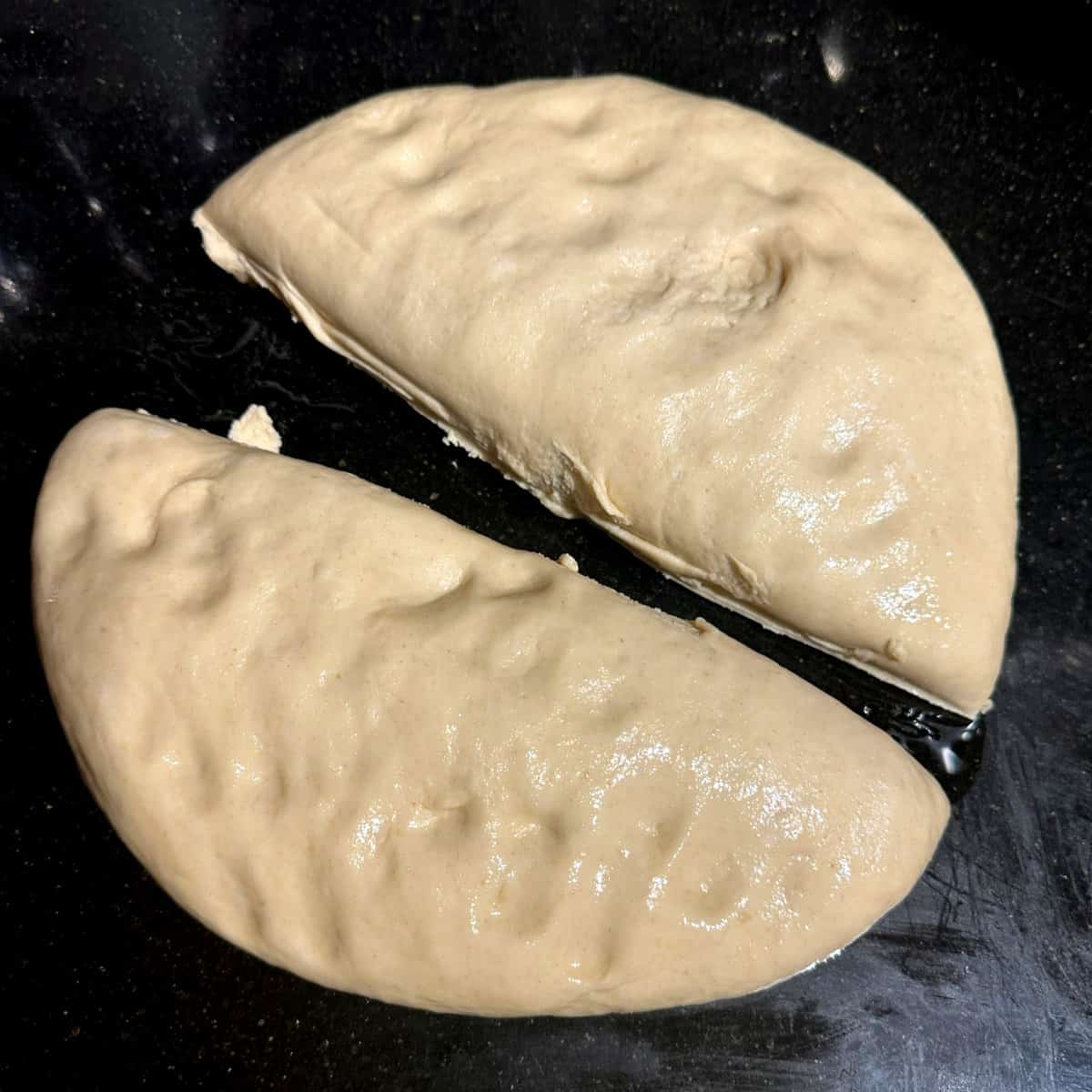
Punch down the dough and divide into two.
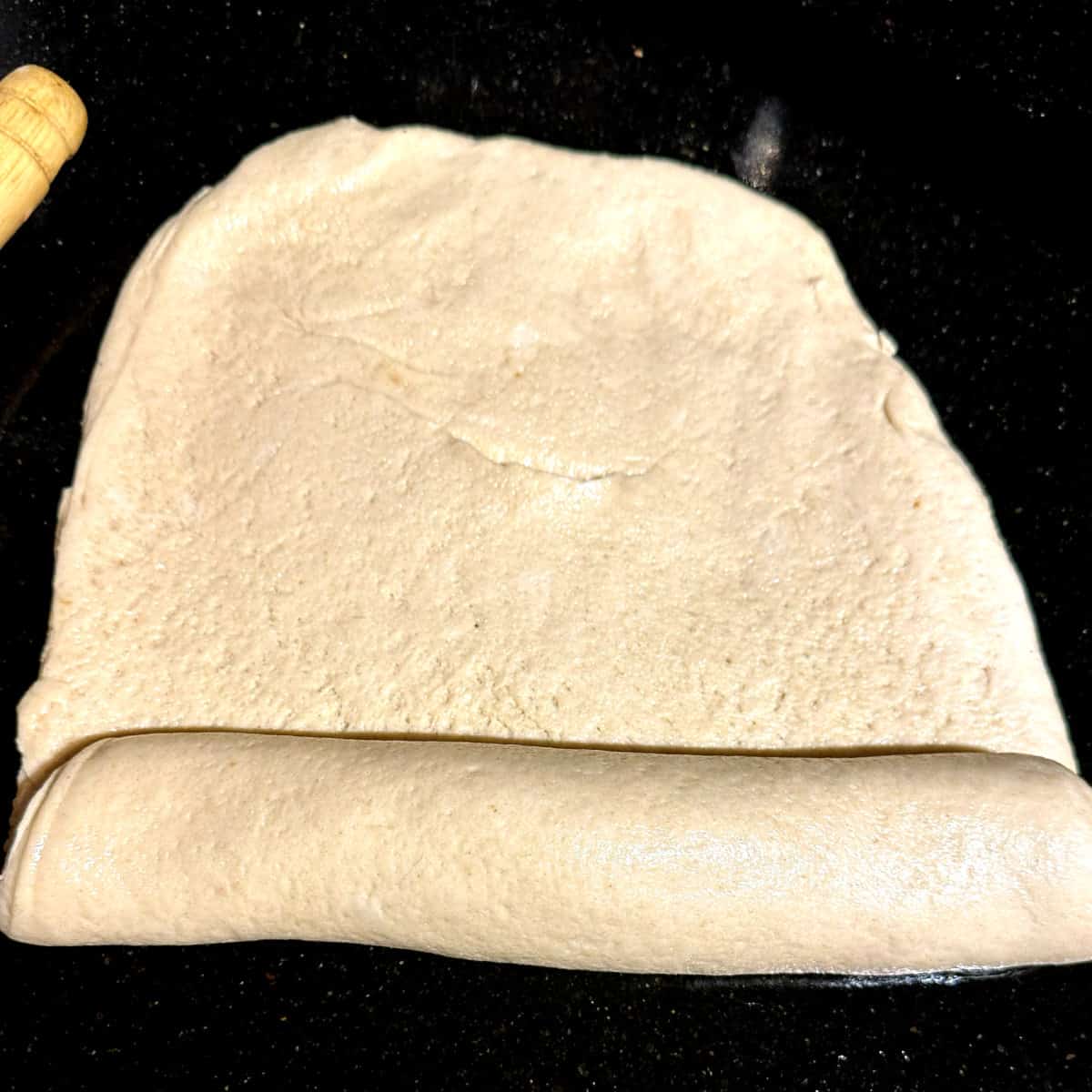
Roll out each half into a rectangle, then roll it like a jelly roll and tuck in the ends to form a loaf. The dough should be very pliable.
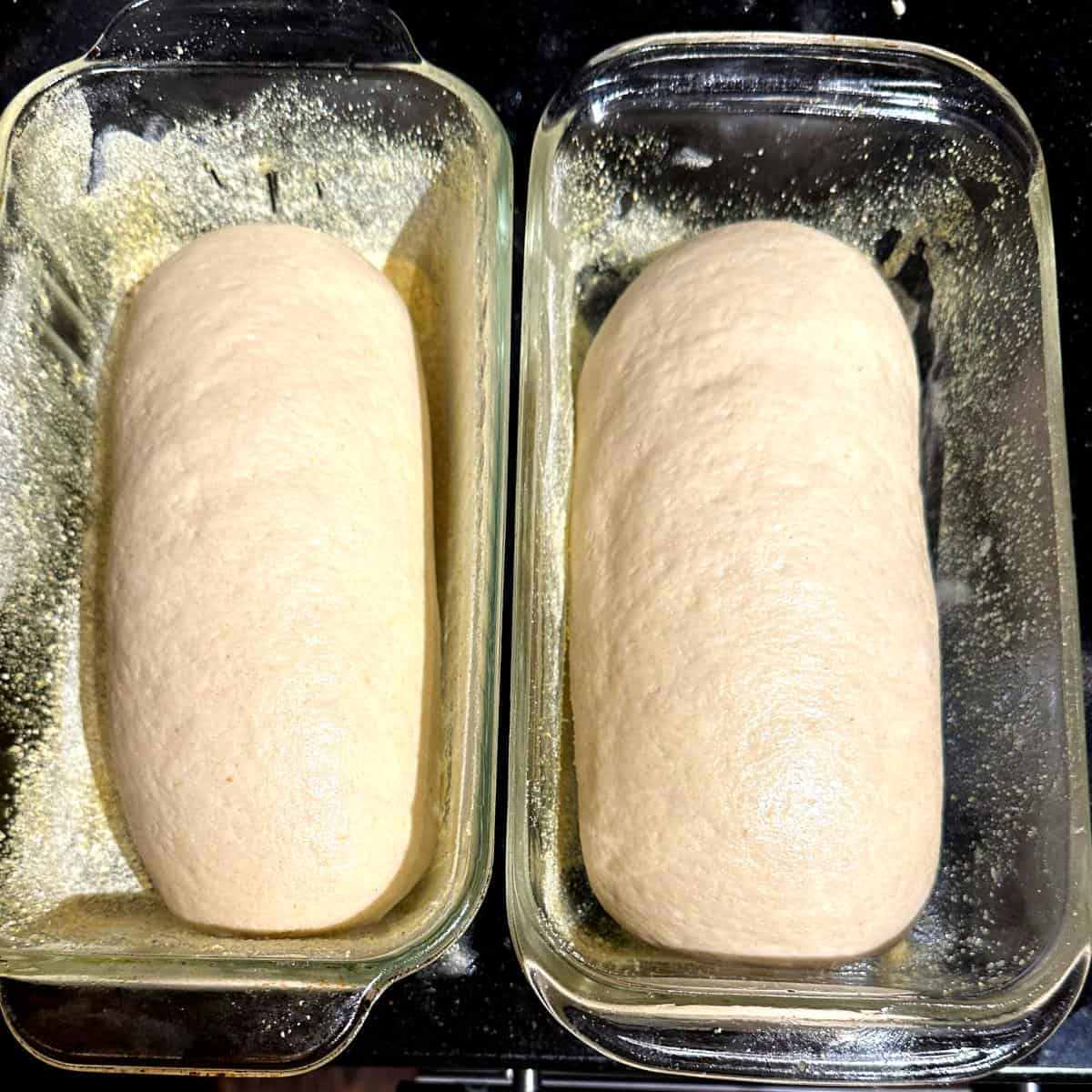
Prep two standard loaf pans by spraying lightly with oil and then sprinkling on some cornmeal or semolina. Place the formed loaves in the prepared pans. Cover with a kitchen towel and let them stand in a warm place for at least two more hours or until the dough rises above the top of the loaf pans.
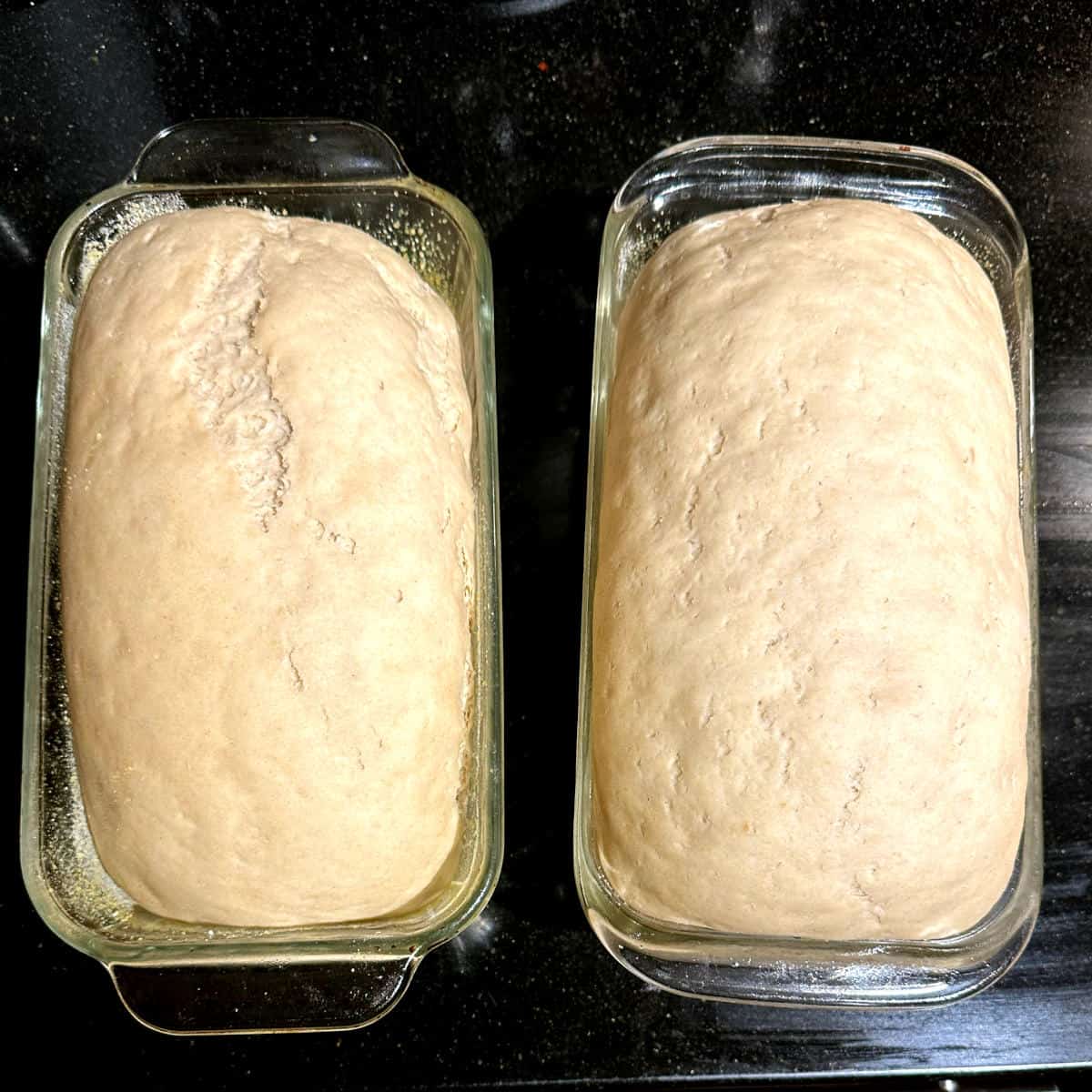
About half an hour before baking, preheat the oven to 425 degrees. Place the loaves in the oven and bake 40 minutes. Remove the loaves from the oven, turn them out on a rack, and let them cool thoroughly before slicing.
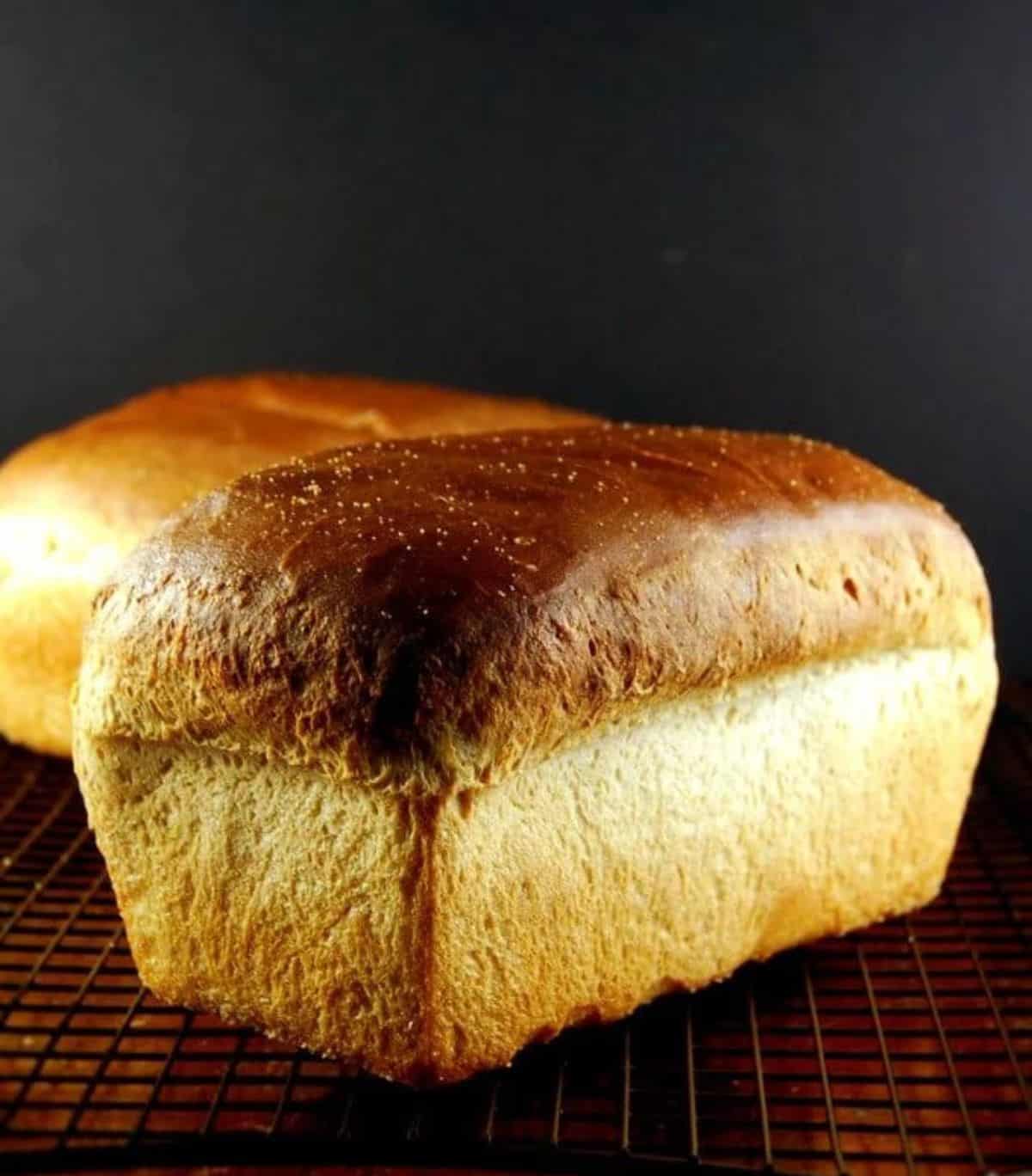
Top tip
How much water you need for the bread could vary depending on the hydration of your sourdough starter and the weather where you live. If you find that adding two cups of water results in a very sticky dough, reduce the amount of water next time to 1 cup and trickle in the remaining water while kneading the dough, if needed.
Recipe FAQs and troubleshooting
Yes, just halve the amount of ingredients and you are all set!
The culprit here is your sourdough starter. If it is not active and fed recently (as in eight hours to 24 hours before use) you simply won't have enough natural yeast in the starter for the dough to rise.
For a softer crust, replace half the water with soy milk.
Bread flour will give you a crustier loaf and the crumb won't be as soft. But it will still be a pretty good loaf of bread.
Storage instructions
- Refrigerate: The bread can be stored at room temperature for four days and in the refrigerator for up to two weeks.
- Freeze: Freeze the bread for up to three months in a freezer-safe bag, whole or sliced.
- Thaw fully before reheating.
More sourdough bread recipes
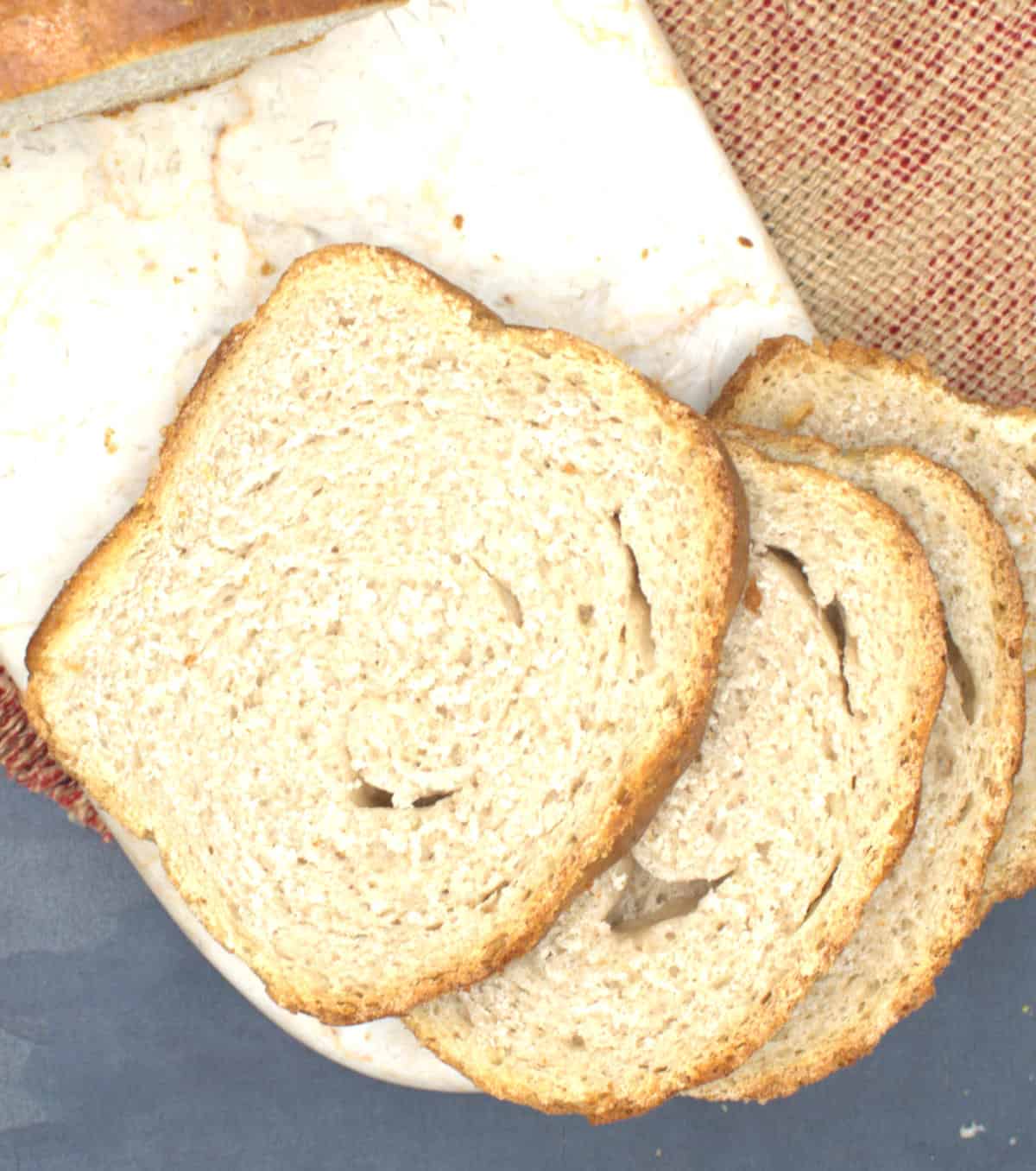
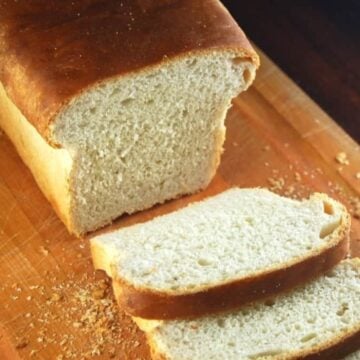
Sourdough Sandwich Bread Recipe
Equipment
- Large mixing bowl or stand mixer
- 2 loaf pans
Ingredients
- 1½ cups sourdough starter (bubbling and active)
- 1½ cups lukewarm water
- 1 cup whole wheat flour
- 4-5 cups unbleached all purpose flour
- 1 tablespoon extra virgin olive oil (or any neutral oil of your choice)
- 1 teaspoon sea salt (or any salt of your choice)
Instructions
- Place the sourdough starter in a large bowl or the bowl of a stand mixer. Add to it the wholewheat flour, 1 cup of all-purpose flour, and water. Mix well and set it aside, covered, in a warm place for four hours.
- Add 2 cups of all-purpose flour, olive oil and salt and mix. Add more flour as you knead until the dough becomes quite firm but still feels a little sticky to your fingers. You can do this by hand or in the stand mixer, using the dough hook attachment, on medium-low speed.
- Turn out the dough on the kitchen platform or any flat surface and knead by hand for 4-5 minutes or until the dough feels smooth and springy to your fingers and barely sticks to the platform.
- Shape into a ball and place in an oiled bowl, turning the ball of dough around once to coat the top with oil.
- Cover tightly and place in a warm spot (like an oven with the light turned on) for at least two hours or until the dough has doubled.
- Punch down the dough and divide into two. Roll out each half into a rectangle, about seven by 10 inches, and roll it up like a jelly roll. With the seam side down, tuck in the ends to form a loaf.
- Prepare two loaf pans by spraying or brushing lightly with oil and then sprinkling on some cornmeal or semolina on the bottom and sides.
- Place the loaves into the prepared loaf pans. Cover with a kitchen towel and let them stand in a warm place for at least two more hours or until the dough domes above the top of the loaf pans.
- About half an hour before baking, preheat the oven to 425 degrees. Place the loaves in the oven and bake 40 minutes.
- Remove the loaves from the oven, turn them out on a rack, and let them cool thoroughly before slicing.
Notes
- You can increase salt by another teaspoon if you want to.
- If your sourdough starter is made using someone else's recipe, you may need more or less water to form the dough. In that case add 1 cup water in step 1 and trickle in more as needed when kneading the dough in step 2.

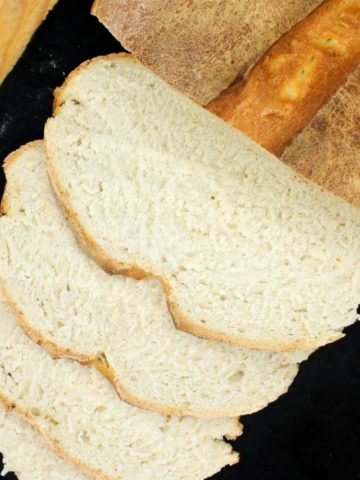
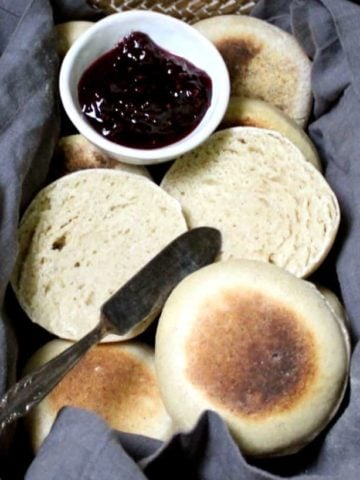
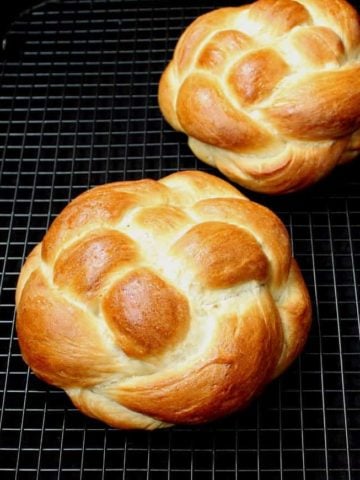
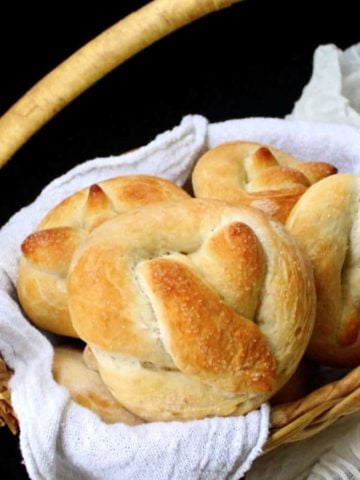
Jaime Orlando-Cantrill
The recipie says 4 to 5 cups of all purpose flour I only used 2 and a quarter cup total.
Mamaw
Can I make this without the wheat flour?
Vaishali
Do you mean with gluten-free flour? I have a fantastic gf sandwich bread recipe you can search for in the search bar or google "holy cow vegan gluten free sandwich bread."
diana
My starter that I started with you is probably only one cup ( as per instructions). How do I increase my starter amount to be at least one and a half cups?
Vaishali
Just add more flour and water (0.75 cups water to every cup of flour) to feed the starter.
Patti
828g seems like a lot of starter. Is this correct? I would like to try this recipe tomorrow. Thanks
Vaishali
My starter has a ratio of 1 cup flour to 3/4 cup water, so a lot of that is water weight.
Carol
Hello! This recipe looks good, but before I waste my ingredients, can I just ask: are you sure it’s perfectly ok to use sourdough discard out of the refrigerator? Because I notice that the recipe calls for active bubbly starter. I just want to make sure!
Thanks-Carol clemans
Vaishali
Hi Carol, if you use discard, make sure it has been fed no more than 3-4 days ago and is quite robust.
DeAnne
Is this adaptable for using a bread machine?
Vaishali
I have a sourdough sandwich bread machine recipe--please follow that!
Lisa
Love your bread! Can you tell me do you use freshly fed starter or day after?
Thanks!
Vaishali
Freshly fed starter would give you the best results!
Linda
Somehow I had it in my head this was a discard recipe! I'm going to stick it in the fridge overnight to ferment, and pick back up on it in the morning! Wish me luck!!!
Vaishali
Good luck! 🙂
Erin H
Can you please update the overall prep time to include the 4 hours of initial rising, the 2 hours to double in the bowl and then the 2 hours in the load pans?
Erin
Hi i make this weekly! Thanks for the recipe! I was wondering how you get the smooth top on the bread? Mine is never beautiful and smooth on top.
Amanda
I made this recipe last night. It is amazing! I added in some everything bagel seasoning while adding in the flour. It is a great recipe. I love the texture of the bread and tender crust. I have made your 100% sourdough wheat loaves several times this month. It is my go to sandwich bread recipe for lunches (peanut butter and jelly). It holds up well for about 5 days in the pantry. I appreciate your recipes.
Natalie
I alternate between making this recipe and the no knead sourdough bread recipe. However, I make this the most. Of course, I started out by using your recipe for a starter 😉 I have never had any problems with your starter or your bread recipe. It always turns out delicious! I do cut this recipe in half to only make one loaf and then I make a fresh loaf every week. One thing that I noticed is when you do change it to 12 instead of 24 slices to cut the recipe in half, it does not change the ratio in the instructions. I wonder if this was some of the trouble people were having when they were trying to make it. Luckily, I noticed this and adjusted accordingly, so I've never had an issue. I love your sourdough recipes so thank you for helping me on my journey with "Breadface" (my 6 year old son named our starter)!
Sara
I am always looking for new things to make with my sourdough starter, this bread is particularly useful since it can be used to replace something I would already buy from the store! I was looking for a no yeast recipe and this one was pretty good. It is definitely a slow rise so follow the times listed and be patient. Remember it could take longer if your house is chilly. Also, I had to add significantly more flour than stated and the dough was still much more soft and sticky than your typical bread. But it turned out so I guess it was alright.
Jo
Can the discard starter loaf be made using a lid on bread tin to get square sandwich bread?
Vaishali
Hi Jo, I suppose so, although I haven't tried this.
Heather
I use discard in this recipe, works well. I needed a quite a bit more flour then the recipe called for. Rest and rise time was about the same but it was also very warm in my kitchen